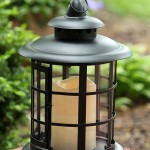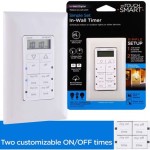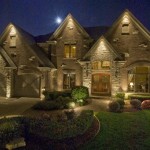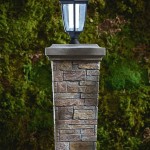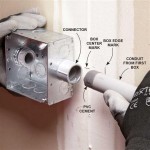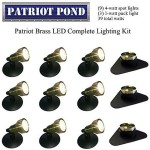Reception Outdoor Lighting: Creating a Welcoming First Impression
Reception areas, especially those outdoors, serve as the initial point of contact for visitors, clients, and employees. The importance of creating a positive and welcoming first impression cannot be overstated. A crucial element in achieving this objective is effective outdoor lighting. Well-planned and executed reception outdoor lighting enhances safety, improves aesthetics, and contributes significantly to brand perception.
Outdoor reception areas can range from simple entrance pathways to elaborate landscaped courtyards. The specific lighting needs will vary depending on the size, layout, and intended use of the space. However, the underlying principles of good lighting design remain consistent: providing adequate illumination for safety and navigation, highlighting architectural features, and creating an inviting atmosphere. Ignoring outdoor lighting can lead to security vulnerabilities, increase the risk of accidents, and project a negative image of the organization.
This article will explore key considerations for designing and implementing effective reception outdoor lighting, including factors to consider, different types of lighting fixtures, and best practices for achieving optimal results. The primary goal is to provide a comprehensive understanding of how to leverage outdoor lighting to create a safe, visually appealing, and welcoming environment for everyone who interacts with the reception area.
Ensuring Safety and Security
The primary function of outdoor reception lighting is to ensure the safety and security of individuals navigating the area. Adequate illumination reduces the risk of accidents, such as slips, trips, and falls, especially at night or during periods of low visibility. Dark or poorly lit areas can also create opportunities for crime and vandalism. Therefore, strategic placement of lighting fixtures is critical to deterring unwanted activity and providing a sense of security.
Paths, walkways, and entrances should be well-lit to allow clear visibility of potential hazards. Stairways and ramps require particularly careful consideration to ensure that each step is clearly illuminated. Lighting fixtures should be positioned to minimize glare, which can impair vision and create further safety risks. Choosing the right color temperature is also important. Cooler color temperatures (e.g., 4000K-5000K) can provide better visibility and a sense of alertness, while warmer temperatures (e.g., 2700K-3000K) can create a more inviting ambiance. However, excessively blue-toned light can be disruptive to sleep patterns if visible from nearby residential areas, so a balanced approach is recommended.
Security lighting should be designed to provide comprehensive coverage of the reception area, including parking areas, loading docks, and other potentially vulnerable zones. Motion-activated lighting can be particularly effective in deterring intruders and alerting security personnel to suspicious activity. These systems can be programmed to activate only when movement is detected, saving energy and reducing light pollution. Additionally, consider integrating lighting with security cameras to enhance surveillance capabilities. Sufficient and even lighting ensures clear images for security footage.
Emergency lighting is another crucial aspect of safety and security. Emergency lighting systems should be independent of the main power supply and designed to provide backup illumination in the event of a power outage. These systems typically utilize battery-powered lighting fixtures or generators to ensure continuous operation during emergencies. Emergency lighting should be clearly marked and easily accessible to guide individuals safely out of the reception area.
Enhancing Aesthetics and Architectural Appeal
Beyond safety and security, outdoor reception lighting plays a significant role in enhancing the aesthetic appeal of the building and its surroundings. Well-designed lighting can highlight architectural features, accentuate landscaping, and create a visually appealing environment that reflects the organization's brand identity. The goal is to create a welcoming and memorable first impression that leaves a positive impact on visitors and clients.
Uplighting can be used to illuminate facades, columns, and other architectural elements, drawing attention to their form and texture. Downlighting can be used to create pools of light on walkways and patios, defining pathways and creating a sense of intimacy. Accent lighting can be used to highlight specific features, such as sculptures, fountains, or signage.
Landscape lighting is an essential component of outdoor reception lighting. Trees, shrubs, and flowerbeds can be illuminated to create a sense of depth and visual interest. Path lighting can be used to guide visitors along walkways and through gardens. Water features, such as fountains and ponds, can be illuminated to create a dramatic focal point. Consider the seasonal changes in landscaping when designing landscape lighting. Deciduous trees, for example, will have a different appearance in the winter months compared to the summer months.
Color temperature and light intensity are important considerations when designing aesthetic lighting. Warmer color temperatures can create a more inviting and relaxing atmosphere, while cooler color temperatures can create a more modern and sophisticated look. Light intensity should be carefully controlled to avoid over-illumination, which can wash out details and create glare. The use of dimmers allows for adjusting the light level to suit different times of day and specific needs.
Consider the building's architectural style and the surrounding environment when selecting lighting fixtures. Modern buildings may benefit from sleek, minimalist lighting fixtures, while traditional buildings may be complemented by more ornate fixtures. The color and finish of the lighting fixtures should also be carefully considered to ensure that they blend seamlessly with the building's exterior.
Selecting Appropriate Lighting Fixtures and Technologies
Numerous types of lighting fixtures and technologies are available for outdoor reception lighting, each with its own advantages and disadvantages. The selection of appropriate lighting fixtures depends on various factors, including the specific lighting needs of the area, the desired aesthetic, and the budget. It's crucial to evaluate the options carefully and choose fixtures that are durable, energy-efficient, and aesthetically pleasing.
LED (Light Emitting Diode) lighting has become the dominant technology for outdoor lighting due to its energy efficiency, long lifespan, and versatility. LEDs consume significantly less energy than traditional lighting technologies, such as incandescent and halogen lamps, and they have a much longer lifespan, reducing maintenance costs. LEDs are also available in a wide range of colors and color temperatures, allowing for greater flexibility in lighting design. Furthermore, LEDs can be easily controlled and integrated with smart lighting systems.
Various types of LED fixtures are suitable for outdoor reception lighting, including path lights, spotlights, floodlights, wall sconces, and bollards. Path lights are low-level fixtures designed to illuminate walkways and pathways. Spotlights are used to highlight specific features, such as trees, sculptures, or signage. Floodlights are used to provide broad illumination of large areas, such as parking lots or building facades. Wall sconces are mounted on walls to provide decorative and functional lighting. Bollards are short, sturdy fixtures that are typically used to delineate pathways and provide low-level illumination.
Solar-powered lighting is another option for outdoor reception lighting. Solar-powered fixtures utilize photovoltaic cells to convert sunlight into electricity, which is then stored in batteries. Solar-powered lighting is environmentally friendly and can be a cost-effective solution in areas where access to electricity is limited. However, the performance of solar-powered lighting can be affected by weather conditions, and the lifespan of the batteries may be shorter than that of traditional lighting fixtures.
Smart lighting systems offer advanced control and automation capabilities, allowing for greater energy efficiency and customization. Smart lighting systems can be programmed to automatically adjust light levels based on time of day, occupancy, or ambient light levels. These systems can also be controlled remotely via smartphones or tablets, allowing for easy adjustments and monitoring. Smart lighting systems can be integrated with other building systems, such as security systems and HVAC systems, to create a more integrated and efficient building environment.
When selecting lighting fixtures, it is essential to consider their durability and resistance to the elements. Outdoor lighting fixtures should be constructed of weather-resistant materials, such as aluminum, stainless steel, or composite materials. They should also be rated for outdoor use and designed to withstand exposure to rain, snow, wind, and sunlight. The Ingress Protection (IP) rating indicates the level of protection against dust and water intrusion. A higher IP rating indicates greater protection.
The selection of lighting fixtures should also take into account light pollution. Light pollution is the excessive or misdirected artificial light that can interfere with astronomical observations, disrupt ecosystems, and have negative impacts on human health. To minimize light pollution, choose lighting fixtures that are shielded or directed downwards to prevent light from spilling upwards into the night sky. Use the lowest light levels necessary to achieve the desired illumination, and consider using timers or motion sensors to turn off lights when they are not needed.
:max_bytes(150000):strip_icc()/aj_640-1f661c131d764b2599fa8abae8d1b3c7.jpg?strip=all)
40 String Light Ideas For Your Wedding

Gorgeous Outdoor Lighting For Weddings Today S Bride

What To Know About Wedding Reception Lighting Basics

Wedding Lighting For Outdoor Celebrations Rock My

Weddings Special Events Outdoor Lighting Perspectives Of Western North Ina

20 Breathtaking Wedding Reception Lighting Ideas You Can Steal Backyard

Outdoor Wedding Lighting Inspirations Nk Ions

Tampa Wedding Lighting Company Event

Outdoor Wedding Lighting Inspirations Nk Ions
:max_bytes(150000):strip_icc()/__opt__aboutcom__coeus__resources__content_migration__brides__public__brides-services__production__2019__04__23__5cbf5bb5fe0be50636c40b0a_pablo-laguia-832c30c3597b4e4bb43f66b2bbba28f8.jpg?strip=all)
40 String Light Ideas For Your Wedding
